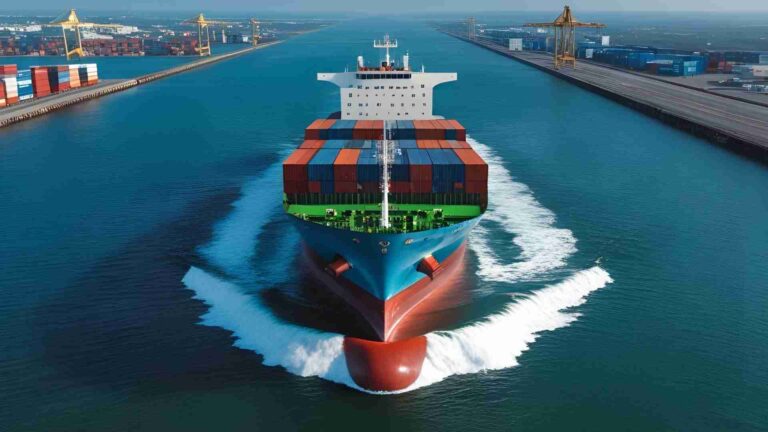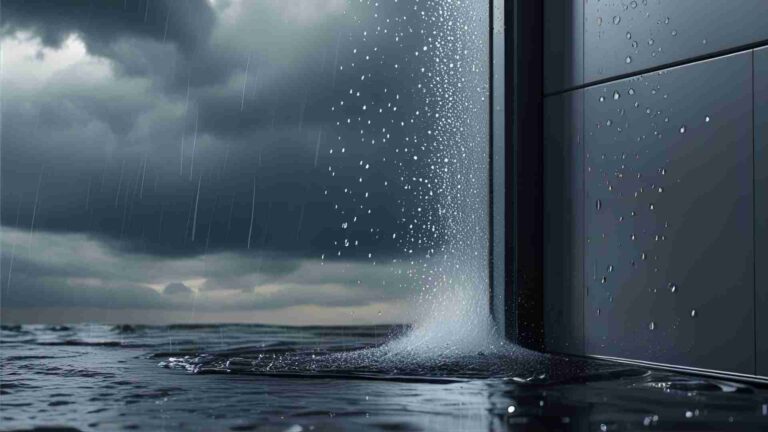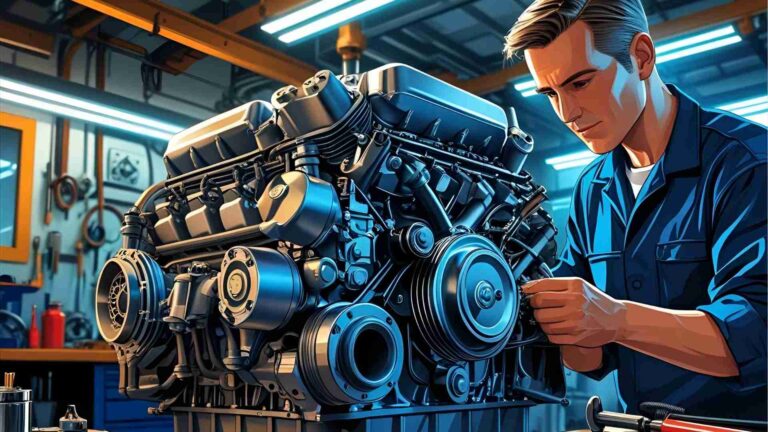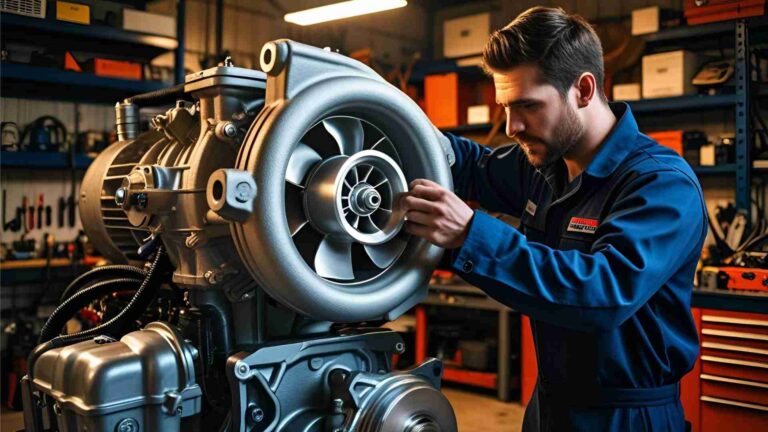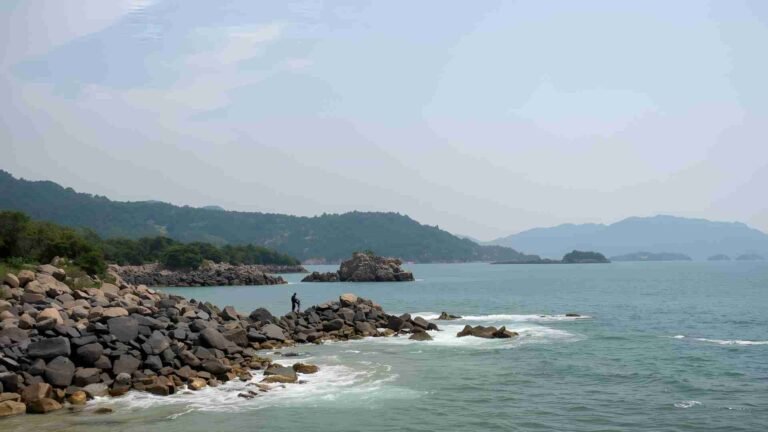A Guide to Fire Pumps on Ship
Comprehensive guide to marine fire pumps: types, SOLAS regulations, installation, maintenance, and top recommendations for ship safety.
Fire safety is paramount on ships, where the confined environment and presence of flammable materials like fuel and machinery heighten the risk of catastrophic fires. Despite being surrounded by water, ships face unique firefighting challenges, making marine fire pumps a critical component of onboard safety systems. These pumps ensure a reliable supply of water or foam to extinguish fires, protecting lives, cargo, and the vessel itself. This guide explores the purpose, types, regulations, installation, maintenance, and top options for marine fire pumps, offering a detailed resource for ship operators, seafarers, and maritime professionals.
What Are Marine Fire Pumps?
Marine fire pumps are specialized systems designed to deliver high-pressure water or foam to extinguish fires on ships. Unlike land-based firefighting systems, these pumps draw seawater directly from the ocean or use onboard foam systems to combat fires, particularly in high-risk areas like engine rooms. Their primary role is to ensure a continuous water supply to fire hoses, sprinklers, and other firefighting equipment, even in emergencies like power failures or engine room fires.
Fire pumps are not limited to firefighting. Main fire pumps often double as general service pumps, assisting with tasks like ballast water management or bilge pumping. However, they must never be used to pump oil or flammable liquids to avoid contamination or fire escalation. Emergency fire pumps, on the other hand, are dedicated solely to firefighting and are critical backups when main systems fail.
Importance of Fire Pumps on Ships
Fires on ships can spread rapidly due to confined spaces, flammable materials, and limited escape routes. A reliable fire pump system is essential to:
- Provide Immediate Response: Deliver water or foam to extinguish fires before they escalate.
- Ensure Redundancy: Offer backup through emergency fire pumps if main systems are compromised.
- Comply with Regulations: Meet stringent international maritime safety standards, such as those set by the International Convention for the Safety of Life at Sea (SOLAS).
- Protect Lives and Assets: Safeguard crew, passengers, cargo, and the ship from fire-related disasters.
Without functional fire pumps, a ship’s firefighting capability would be severely limited, increasing the risk of loss of life and property.
Types of Marine Fire Pumps
Marine fire pumps are broadly categorized into two types: centrifugal and positive displacement. Each has distinct advantages, disadvantages, and applications, making the choice dependent on the ship’s size, type, and operational needs.
Centrifugal Fire Pumps
Centrifugal fire pumps are the most common type used on ships due to their high flow rates and reliability. These pumps are ideal for delivering large volumes of water quickly, a critical factor in firefighting.
How They Work
Centrifugal pumps operate using a rotating impeller within a volute casing. The impeller’s rapid rotation creates centrifugal force, pushing water outward and through the discharge. The volute’s snail-like shape directs water toward the outlet, creating a low-pressure zone that draws in more water. This design enables centrifugal pumps to achieve high flow rates, making them suitable for supplying fire hoses and sprinkler systems.
However, centrifugal pumps require priming—filling the pump with water before operation—to function effectively. Running a centrifugal pump dry can cause severe damage. Modern designs often include self-priming mechanisms or vacuum pumps to streamline this process.
Advantages
- High Capacity: Delivers large volumes of water, ideal for rapid firefighting.
- Simple Design: Easy to operate and maintain.
- Cost-Effective: Generally more affordable than positive displacement pumps.
- Versatile: Can serve as general service pumps for tasks like ballasting.
Disadvantages
- Requires Priming: Must be filled with water before operation.
- Lower Pressure: Less effective for high-pressure applications like mist systems.
Positive Displacement Fire Pumps
Positive displacement pumps are less common but valuable for specific firefighting needs, particularly when high pressure or foam is required.
How They Work
These pumps use a system of expanding and contracting cavities with one-way valves. As the cavity expands, it creates a vacuum that draws water or foam through the inlet valve. When the cavity contracts, the trapped fluid is forced out through the discharge valve. This mechanism allows positive displacement pumps to handle air, foam, and viscous liquids, making them suitable for oil fires or high-pressure mist systems.
Common types include gear, piston, and plunger pumps, each using different methods to move fluid.
Advantages
- High Pressure: Capable of delivering water or foam at high pressures, ideal for mist systems.
- Foam Compatibility: Effective for oil fires requiring foam suppression.
- No Priming Needed: Can operate without pre-filling, simplifying startup.
Disadvantages
- Lower Capacity: Cannot match the flow rates of centrifugal pumps.
- Higher Cost: More expensive to purchase and maintain.
- Complex Maintenance: Requires more technical expertise for repairs.
Comparison Table: Centrifugal vs. Positive Displacement Fire Pumps
| Feature | Centrifugal Pumps | Positive Displacement Pumps |
|---|---|---|
| Flow Rate | High (up to 180 m³/hr) | Lower |
| Pressure | Moderate (36–58 psi) | High (suitable for mist) |
| Priming | Required | Not required |
| Foam Compatibility | Limited | Excellent |
| Cost | Affordable | Expensive |
| Maintenance | Simple | Complex |
| Common Use | Main fire pumps | Emergency or foam systems |
SOLAS Regulations for Marine Fire Pumps
The International Convention for the Safety of Life at Sea (SOLAS) sets strict requirements for fire pumps to ensure ship safety. These regulations vary based on ship type and gross tonnage (GT).
Main Fire Pump Requirements
- Passenger Ships:
- <4,000 GT: At least two independent fire pumps.
- >4,000 GT: At least three independent fire pumps.
- Capacity: Must deliver at least ⅔ of the bilge pumps’ capacity.
- Pressure:
- <4,000 GT: 0.30 N/mm² (44 psi).
- >4,000 GT: 0.40 N/mm² (58 psi).
- Cargo Ships:
- <1,000 GT: Number of pumps determined by the administration.
- >1,000 GT: At least two independent fire pumps.
- Capacity: Must deliver at least 4/3 of the bilge pumps’ capacity of a passenger ship of similar size, not exceeding 180 m³/hr.
- Individual Pump Capacity: At least 80% of the total required capacity divided by the number of pumps, with a minimum of 25 m³/hr, delivering two jets of water.
- Pressure:
- <6,000 GT: 0.25 N/mm² (36 psi).
- >6,000 GT: 0.27 N/mm² (39 psi).
- Non-Return Valves: Required for centrifugal pumps to prevent backflow.
- Relief Valves: Mandatory for positive displacement pumps to manage pressure surges.
Emergency Fire Pump Requirements
- Applicability:
- Passenger ships >1,000 GT.
- Cargo ships >2,000 GT.
- Location: Must be outside the engine room, in areas like the steering gear room, shaft tunnel, or bow thruster room.
- Power Source: Independently powered by a diesel engine or an electric motor connected to an emergency generator.
- Capacity: Minimum 25 m³/hr, delivering two ½-inch jets with a horizontal throw of at least 40 feet.
- Suction: Independent suction with a total head not exceeding 4.5 meters under all conditions of list or trim.
- Priming: If above water level, a priming system is required.
- Fuel Supply: For diesel-driven pumps, a fuel tank must support at least 3 hours of full-load operation, with a reserve tank outside the engine room.
- Starting: Manual, battery, or hydraulic start, operable by one person.
Chart: Fire Pump Requirements by Ship Type
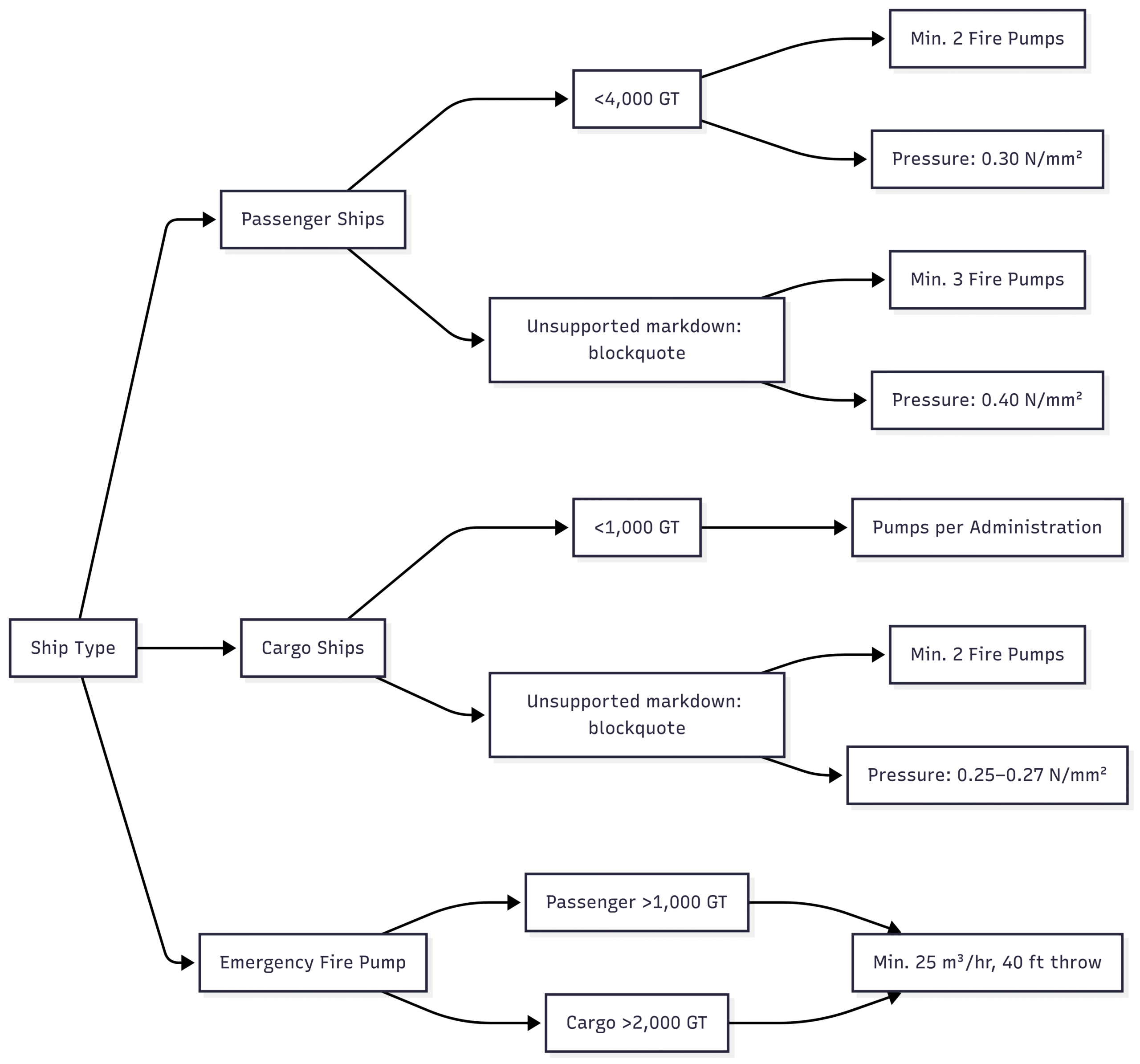
Choosing the Right Marine Fire Pump
Selecting a marine fire pump involves balancing ship size, type, operational needs, and regulatory compliance. Here are key considerations:
Ship Size and Type
- Large Ships (>4,000 GT): Require multiple high-capacity centrifugal pumps for main fire systems and an emergency pump for backup.
- Smaller Vessels (<1,000 GT): May use a single centrifugal pump, with capacity determined by the administration.
- Oil Carriers: Benefit from positive displacement pumps for foam systems to combat oil fires.
Capacity and Pressure
- Flow Rate: Centrifugal pumps are preferred for high flow rates (up to 180 m³/hr) to supply multiple fire hoses.
- Pressure: Positive displacement pumps are better for high-pressure applications, such as mist systems for engine room fires.
- Head Calculation: Total head = elevation + friction loss + pressure. Use a friction loss calculator to determine pipe-related losses. For example, 1 PSI = 2.31 head feet.
Certification
Pumps must be certified by bodies like the American Bureau of Shipping (ABS) to ensure compliance with SOLAS and other maritime standards.
Foam Capability
For ships carrying flammable liquids, a foam-compatible positive displacement pump can enhance firefighting capabilities.
Installation of Marine Fire Pumps
Proper installation is critical to ensure fire pumps function effectively during emergencies. Key considerations include:
System Overview
Marine fire pumps connect to a network of galvanized pipes (50–180 mm diameter) designed to resist seawater corrosion. The system includes:
- Sea Chest: Filters seawater to prevent debris from clogging the pump.
- Main Fire Pumps: Located in the engine room, typically near general service or ballast pumps.
- Emergency Fire Pump: Positioned outside the engine room (e.g., steering gear room, shaft tunnel, or bow thruster room).
- Piping Network: Supplies water to fire hoses, sprinklers, anchor washing, and bilge ejectors.
Installation Guidelines
- Main Fire Pumps:
- Install near the engine room’s bottom platform for accessibility.
- Connect to the ship’s main electrical supply.
- Use non-return valves for centrifugal pumps to prevent backflow.
- Emergency Fire Pump:
- Place in a separate compartment, remote from the engine room.
- Use independent suction, avoiding the main fire pump’s sea chest unless A-60 fire-rated piping is used.
- Power via a diesel engine or emergency generator.
- Controls:
- Enable operation from the fire control station, engine control room, bridge, or forecastle.
- Ensure manual operation is possible in case of automation failure.
- Priming:
- Install self-priming systems or vacuum pumps for centrifugal pumps.
- Keep pumps primed unless operating in freezing conditions, where draining is necessary.
Chart: Marine Fire Pump System Flow
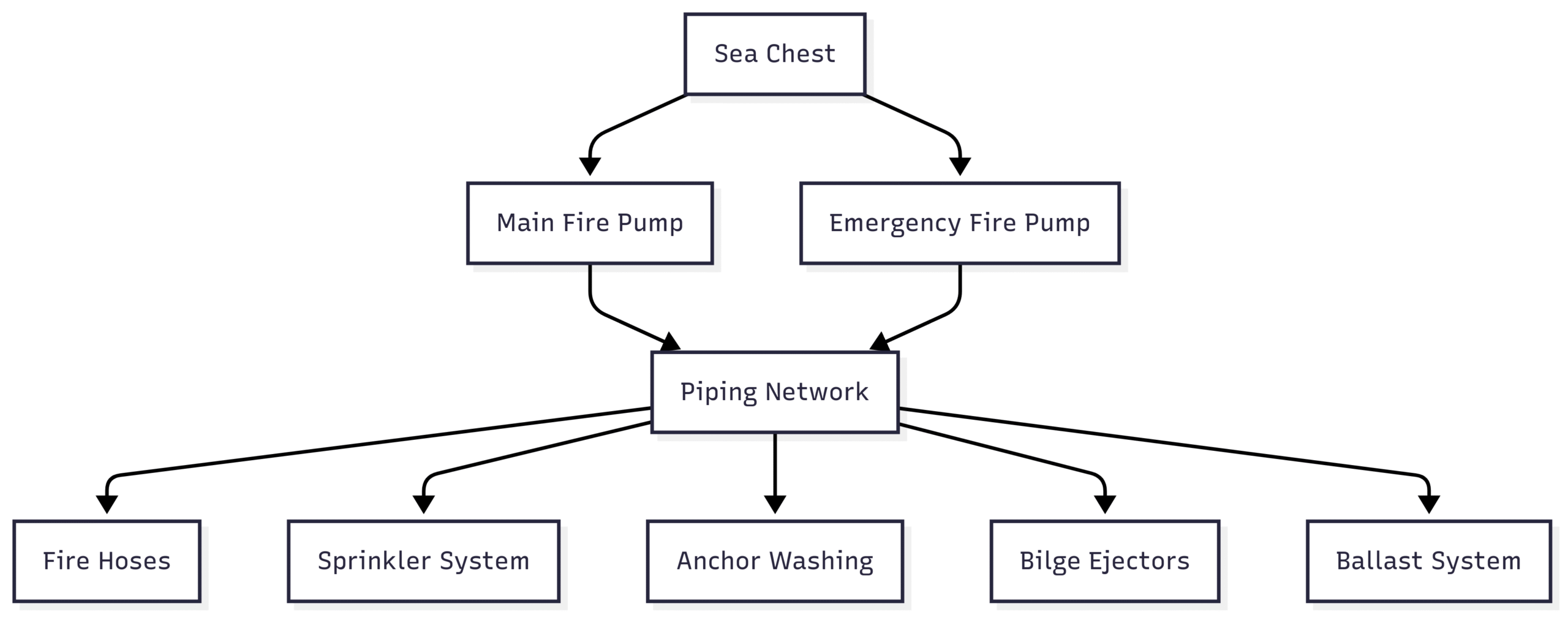
Maintenance of Marine Fire Pumps
Regular maintenance ensures fire pumps remain operational during emergencies. Maintenance schedules include daily, weekly, monthly, and semi-annual checks.
Daily Checks
- Visual Inspection: Check for leaks, corrosion, or damage.
- Temperature: Monitor motor and bearing temperatures to detect overheating.
- Sound: Listen for unusual noises indicating loose parts or mechanical issues.
Weekly Checks
- Vibration: Investigate vibrations to identify misalignment or bearing issues.
- Discharge Pressure: Ensure pressure meets SOLAS requirements; low pressure may indicate leaks or clogged filters.
- Power Reading: Monitor motor amperage to detect electrical issues.
Monthly Checks
- Coupling Alignment: Verify alignment and grease couplings and bearings.
- Foundation Bolts: Tighten bolts to prevent loosening.
Semi-Annual Checks
- Run Standby Pumps: Operate emergency pumps to ensure functionality.
- Component Lifespan: Replace parts nearing the end of their service life, even if functional.
Precautions
- Freezing Conditions: Drain pumps and pipes to prevent freezing.
- Non-Return Valves: Check for leaks if standby pumps rotate during operation.
- Gland Packing/Mechanical Seals: Allow slight leakage for gland packing; ensure no leakage for mechanical seals.
- Greasing: Open drain plugs when greasing to remove old grease.
Top Marine Fire Pump: Carver Pump GH Series
For reliable marine fire pumps, Carver Pump’s GH Series end-suction centrifugal pump stands out. Certified by ABS, it meets SOLAS requirements and is designed for maritime applications.
Specifications
- Material: Stainless steel alloy or nickel-aluminum bronze for corrosion resistance.
- Capacity: Up to 180 m³/hr, suitable for large ships.
- Pressure: Meets SOLAS requirements (0.25–0.40 N/mm² depending on ship type).
- Priming: Available with self-priming options.
- Applications: Firefighting, general service, and ballast pumping.
Why Choose Carver Pump?
- Experience: Over 80 years of manufacturing pumps to military and maritime standards.
- Quality: ISO 9001:2015 certified, ensuring high standards in design and customer service.
- Durability: Built to withstand harsh marine environments.
- Made in the USA: Produced in Muscatine, Iowa, ensuring consistent quality.
Pricing
Pricing for Carver Pump’s GH Series varies based on specifications and customization. For accurate pricing, contact Carver Pump directly at https://www.carverpump.com/.
Conclusion
Marine fire pumps are the backbone of a ship’s firefighting system, ensuring safety in the face of one of the ocean’s most dangerous hazards. By understanding the types, regulations, installation, and maintenance of these pumps, ship operators can make informed decisions to protect their vessels. Centrifugal pumps dominate due to their high capacity and affordability, while positive displacement pumps offer specialized solutions for high-pressure and foam applications. Compliance with SOLAS ensures pumps meet global safety standards, and regular maintenance keeps them ready for action. For top performance, Carver Pump’s GH Series offers a reliable, ABS-certified solution trusted by maritime professionals.
By equipping your ship with the right fire pumps and maintaining them diligently, you can navigate the seas with confidence, knowing you’re prepared for any fire emergency.
Happy Boating!
Share A Guide to Fire Pumps on Ship with your friends and leave a comment below with your thoughts.
Read 22 Jobs in Marine Engineering (With Salary Expectations) until we meet in the next article.


